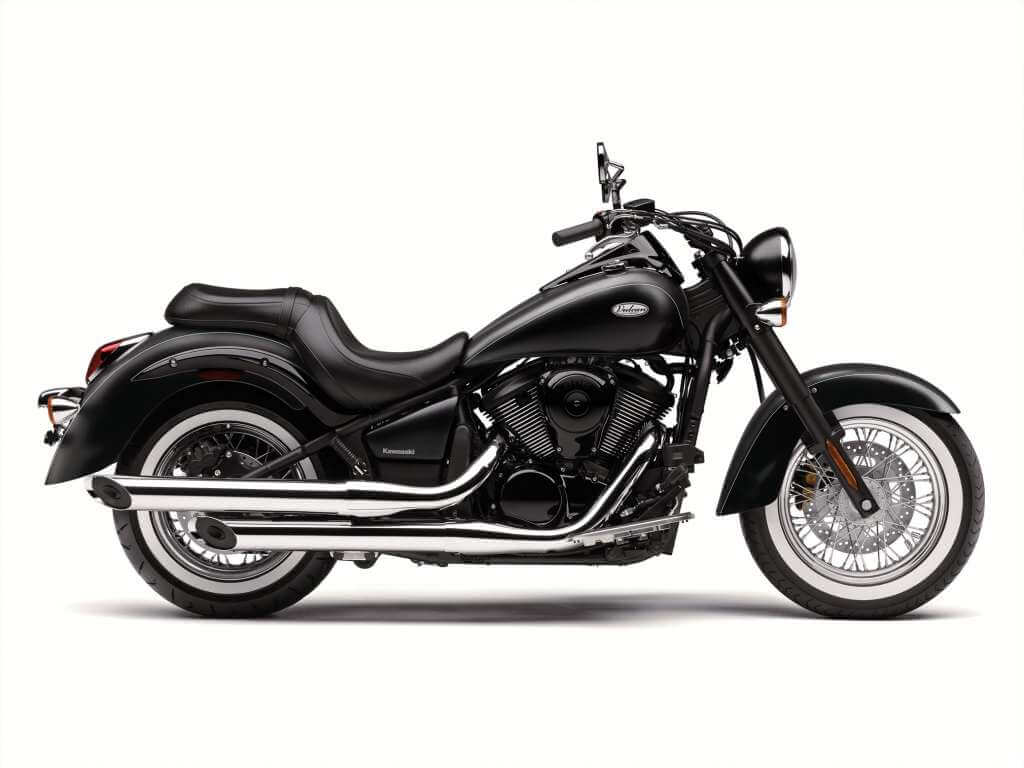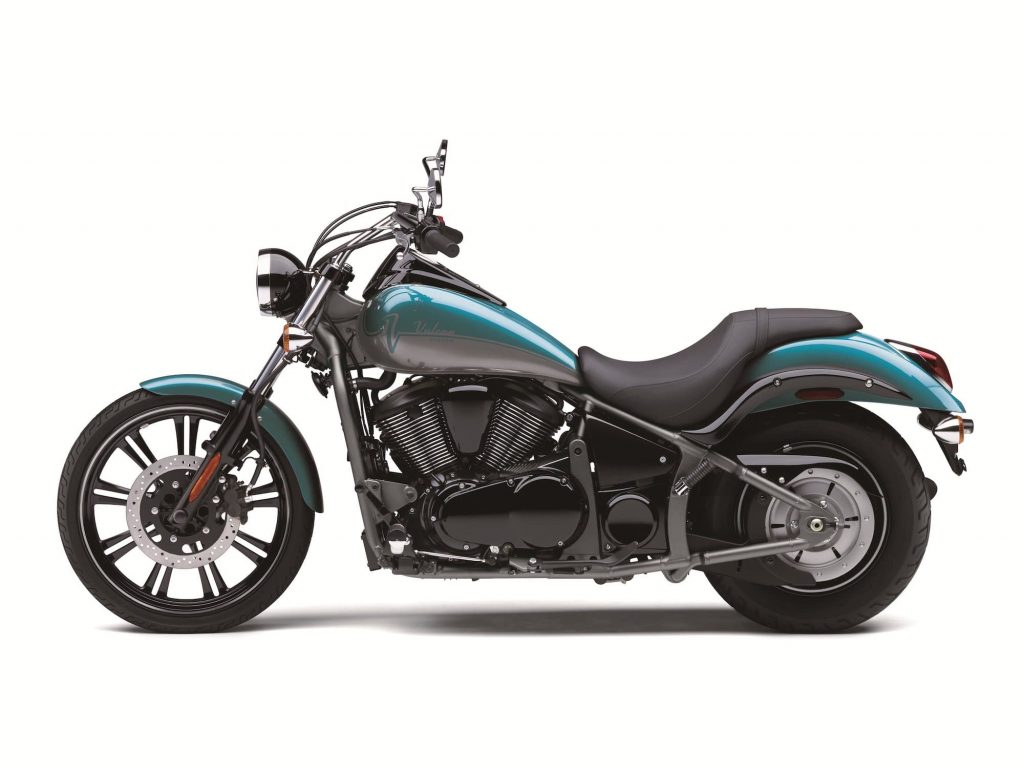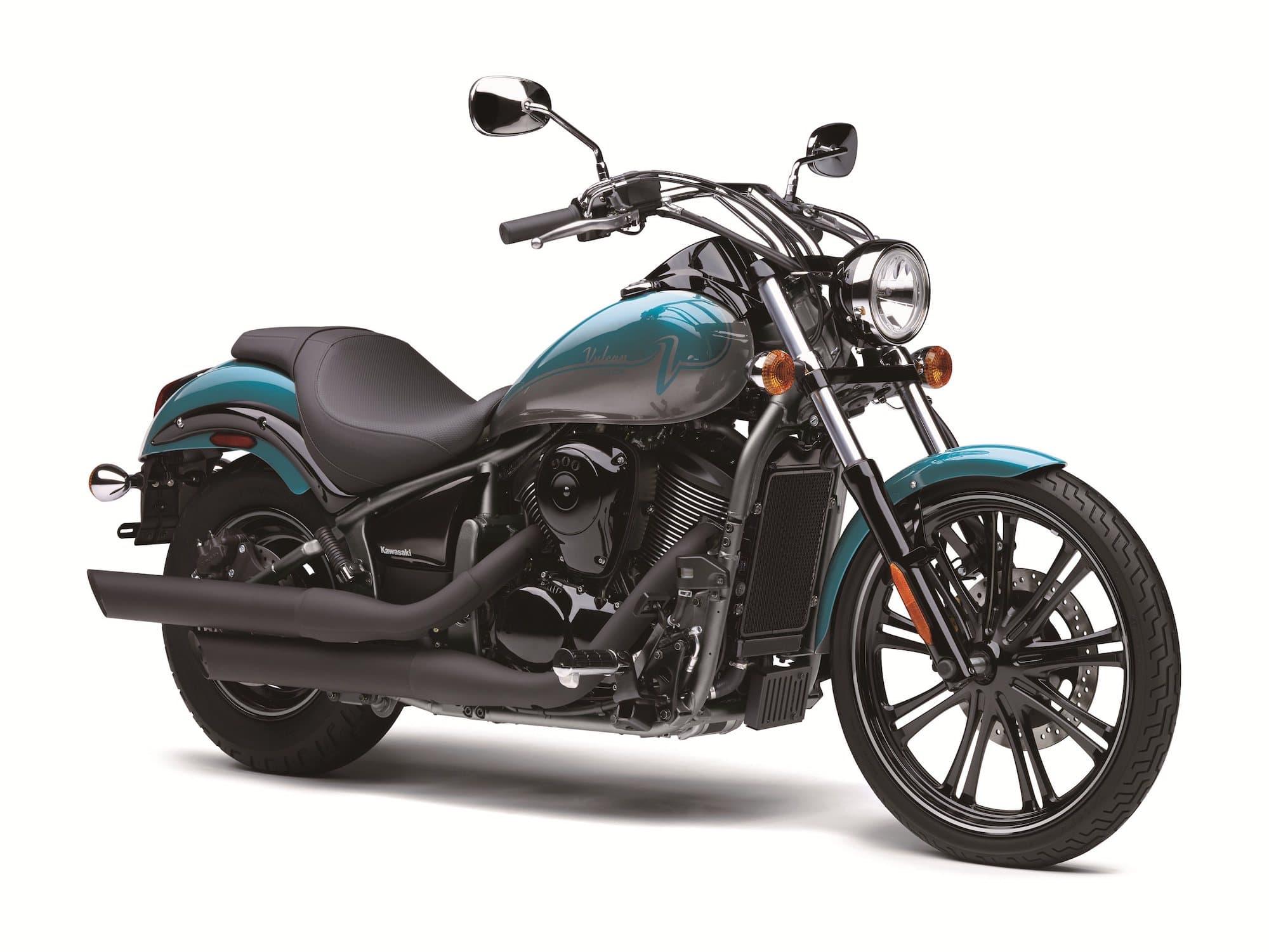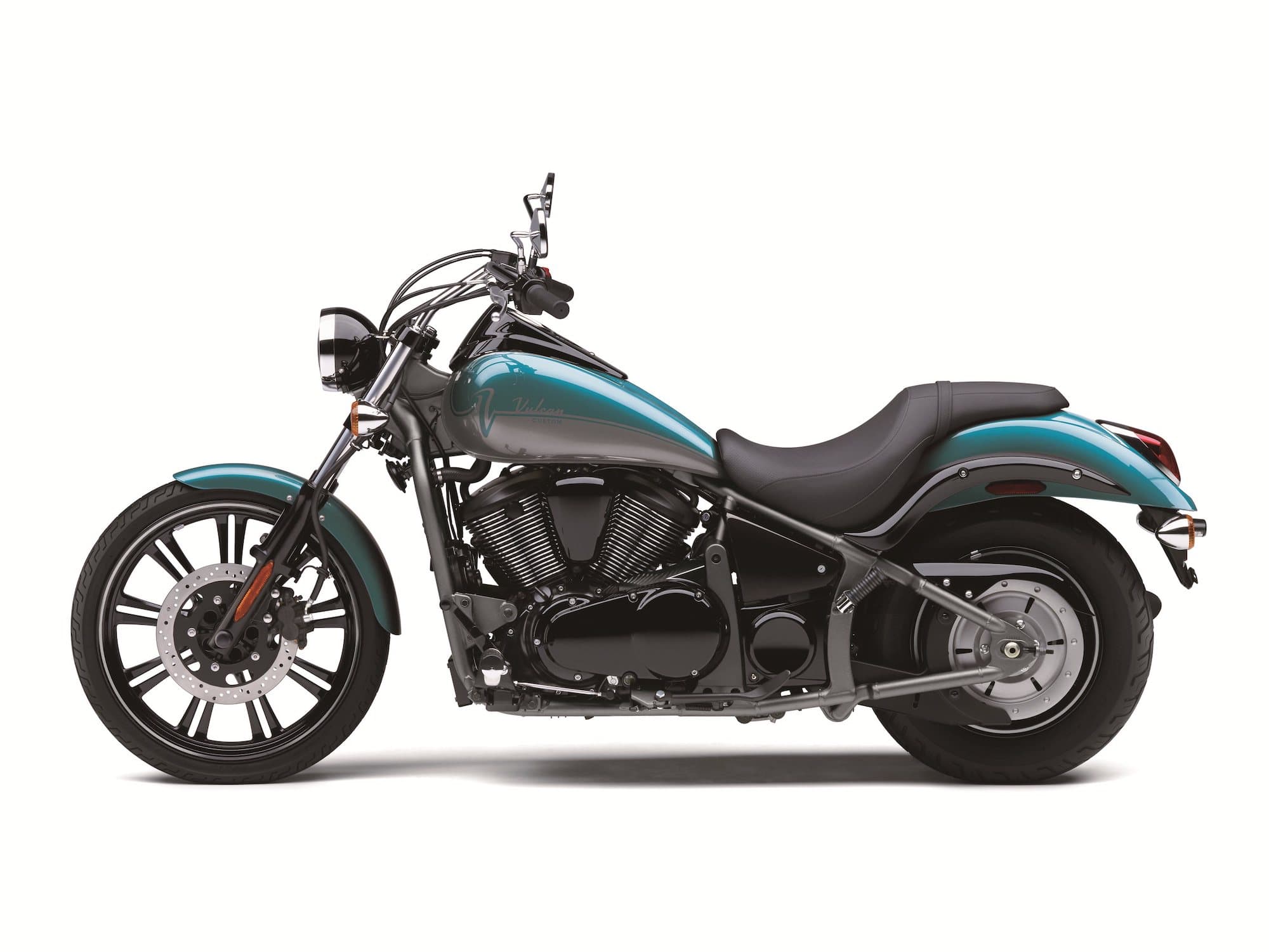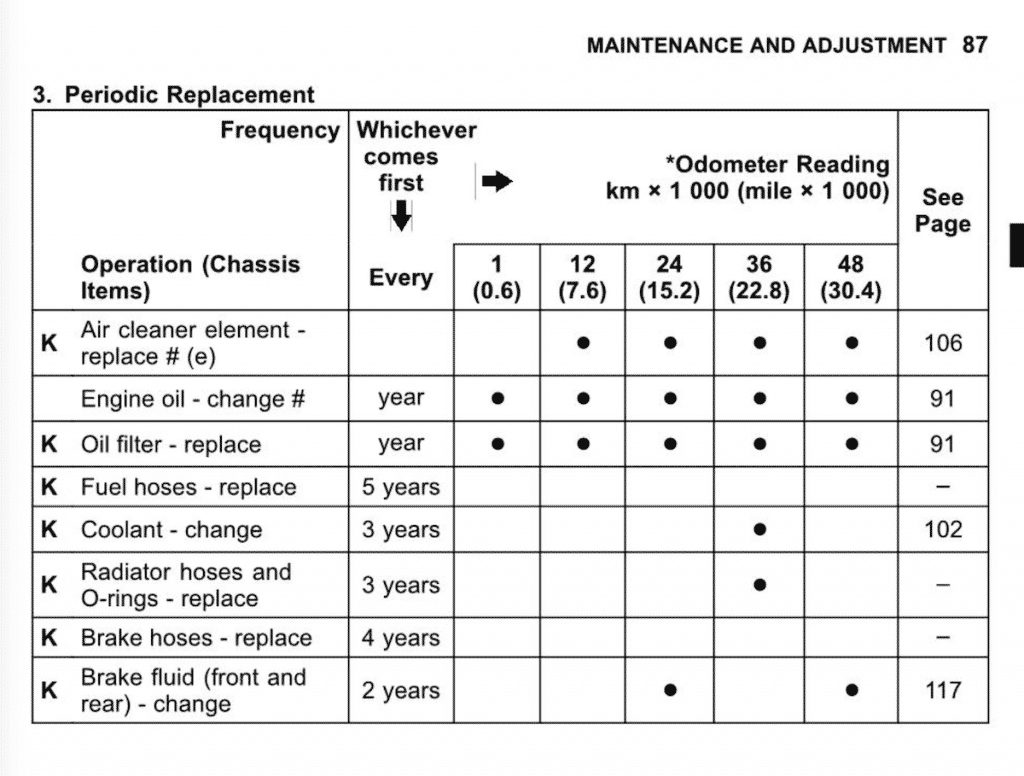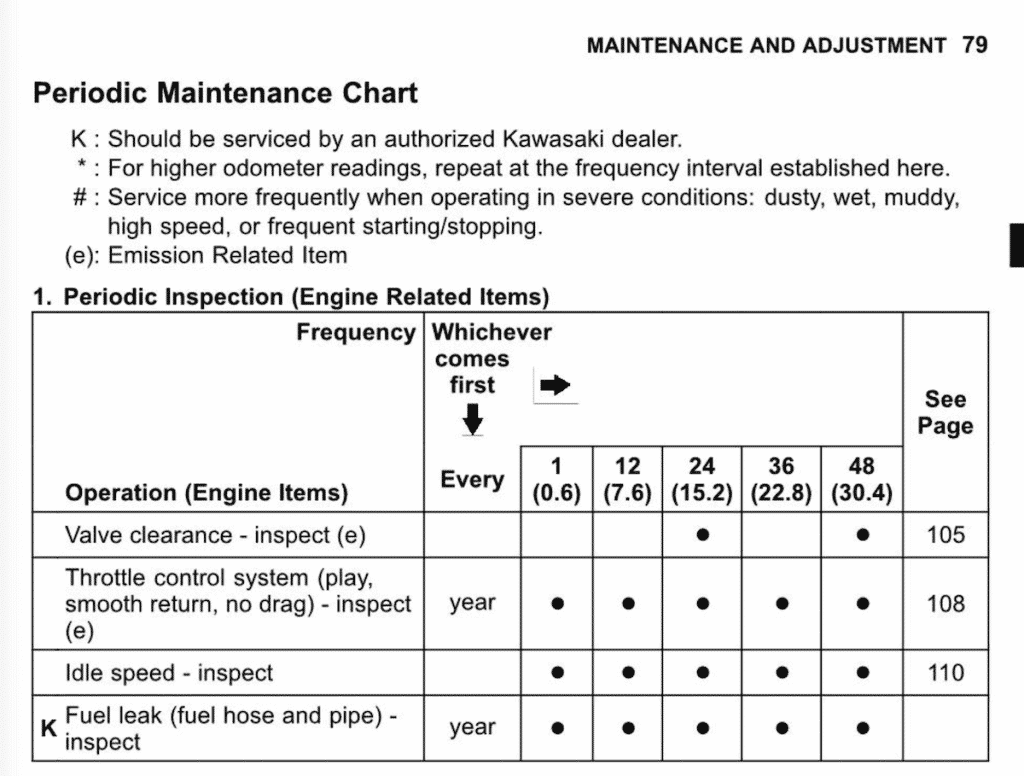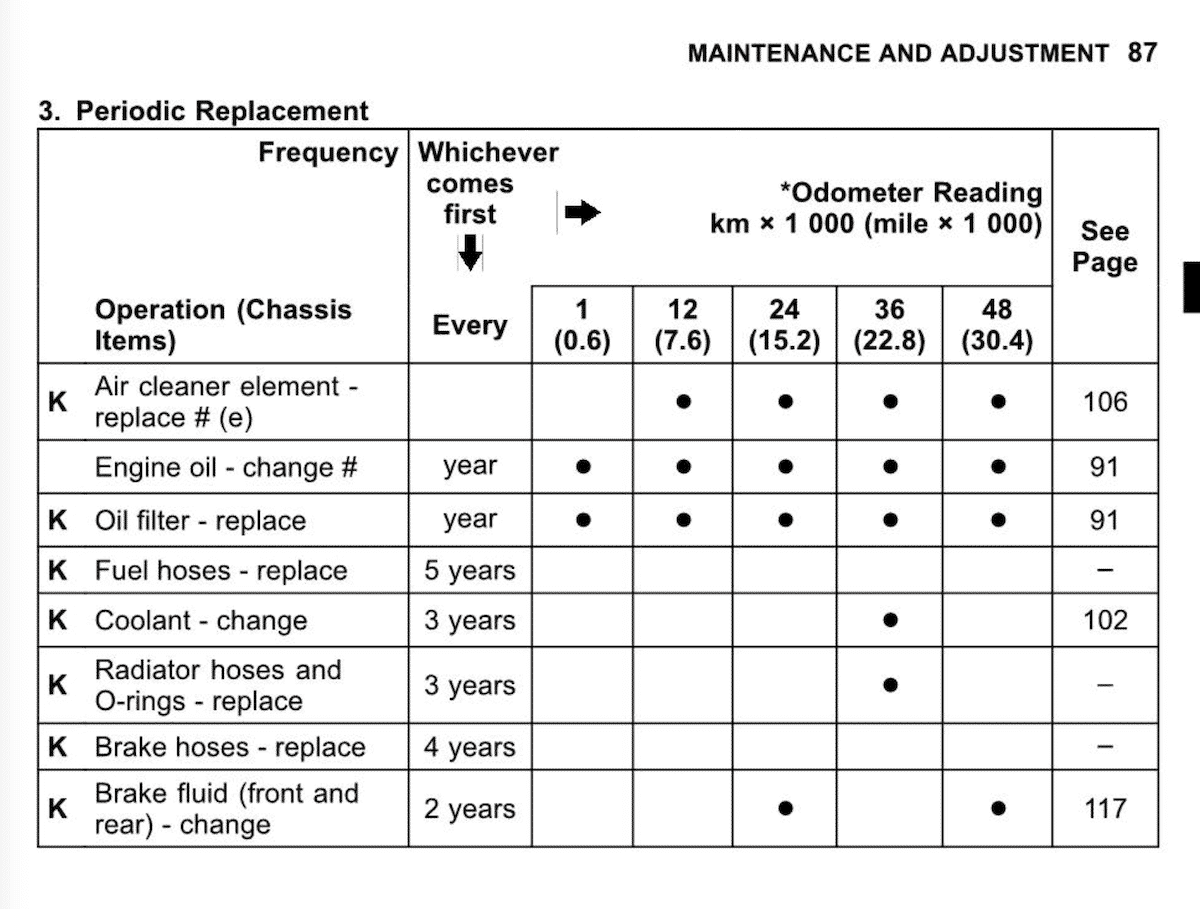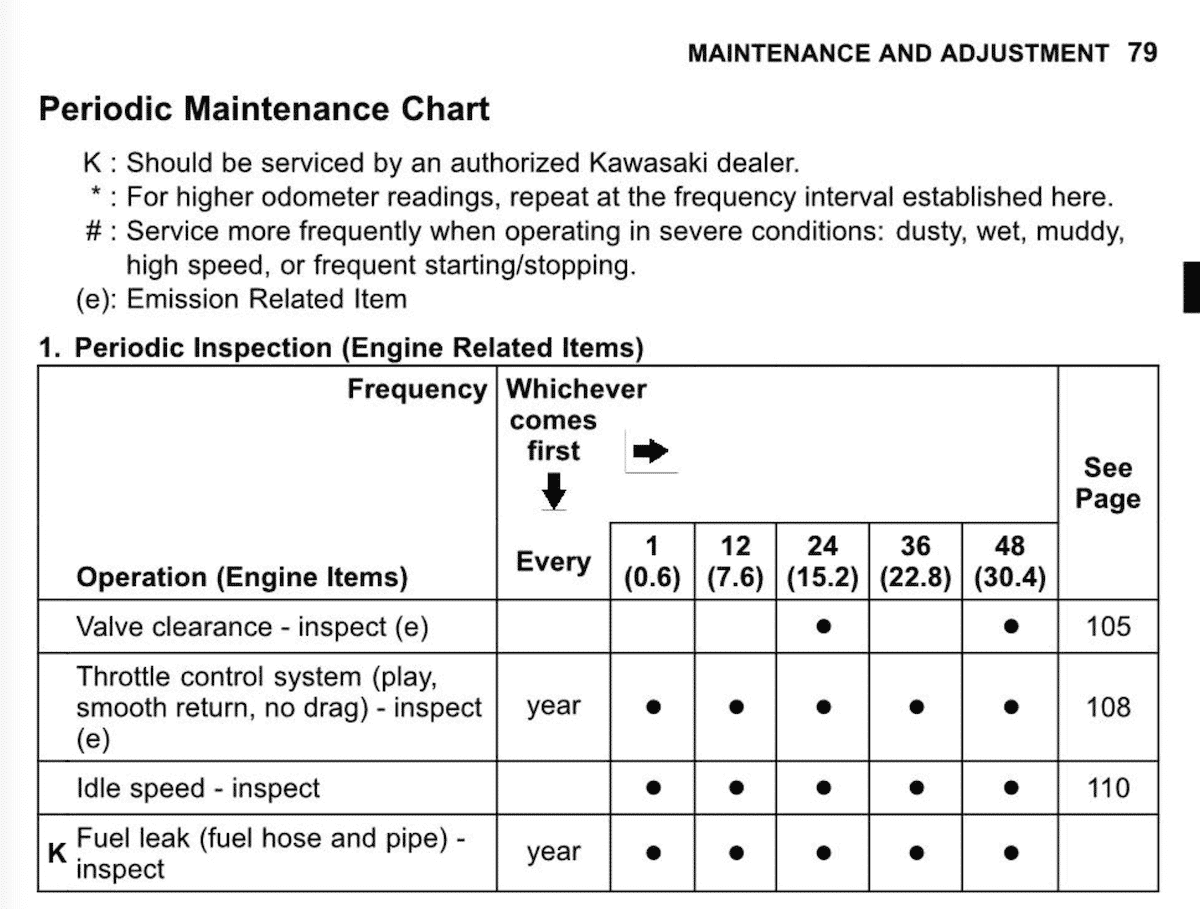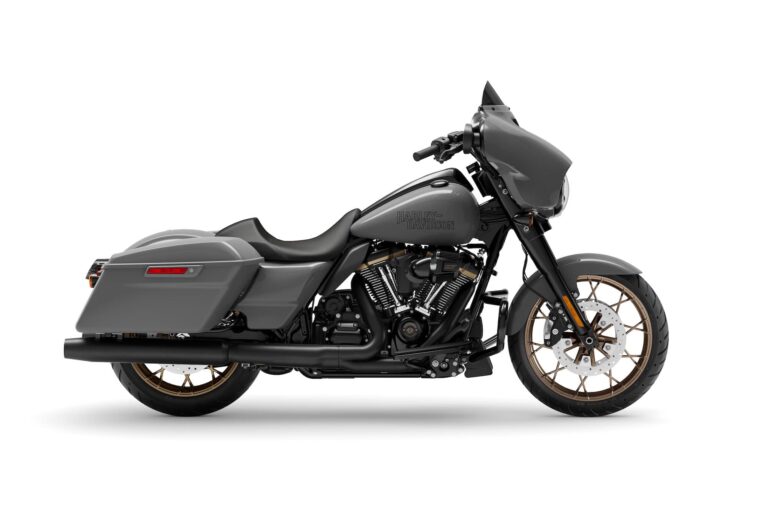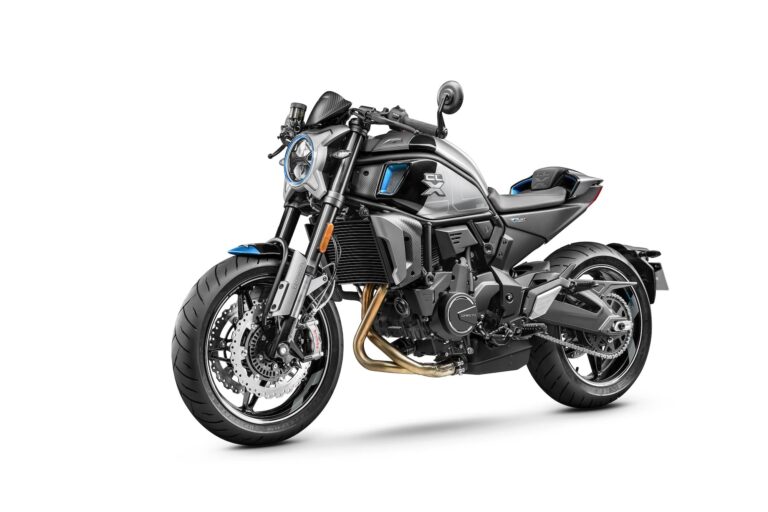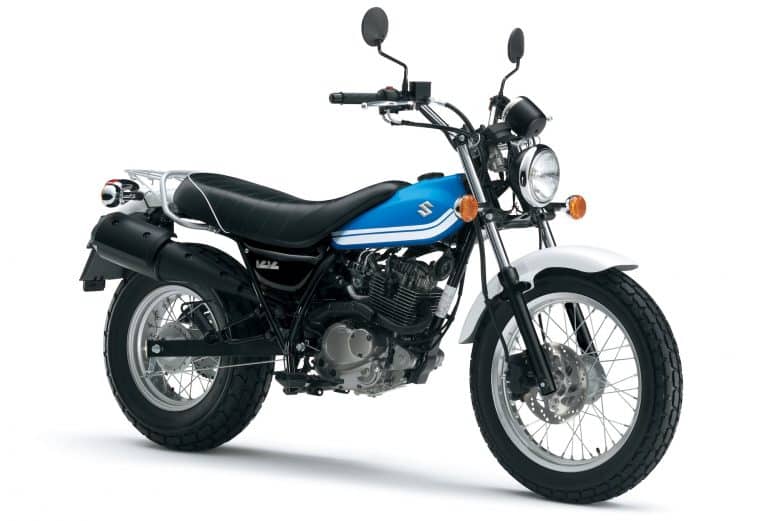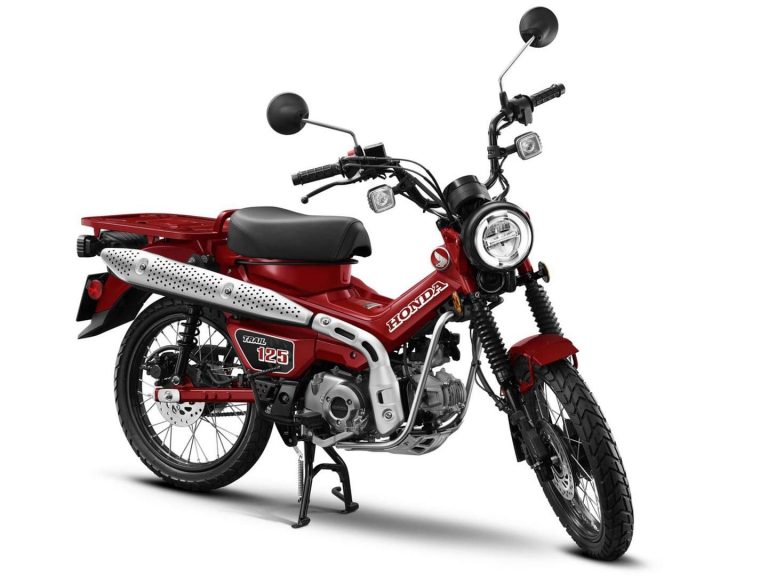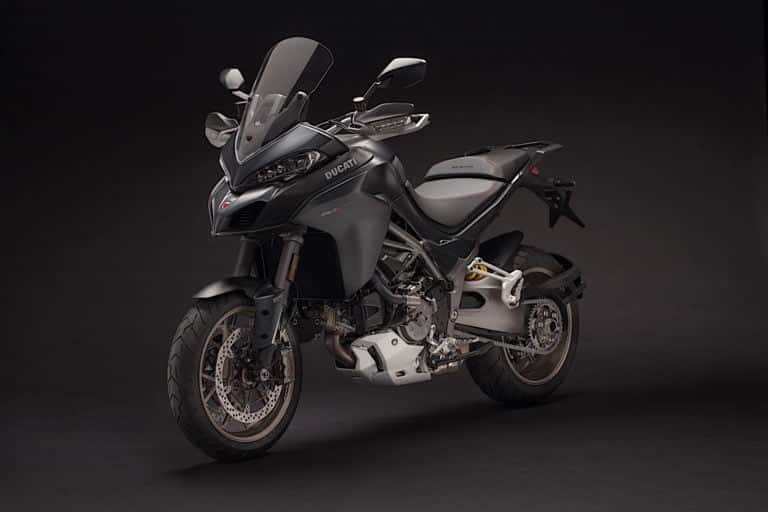Kawasaki Vulcan 900 (2006-present) Maintenance Schedule and Service Intervals
This is the maintenance schedule with associated service intervals for the Kawasaki Vulcan 900, including the Classic and Custom. They’re all part of the VN900 family.
The Kawasaki Vulcan 900 is an easy-going and classy middleweight cruiser motorcycle. The Vulcan range goes from tiny (125cc) all the way to massive (2000 — no longer available), so the 900 sits roughly right in the middle.
The Kawasaki Vulcan 900 Classic was first introduced in 2006. It is powered by a liquid-cooled 903 cc V-Twin engine, with a five-speed transmission, putting power down through a belt drive.
Despite being a little old-tech (no ABS!), the Vulcan 900 is still being made today (as of 2021, anyway), with no mechanical changes since 2006 other than styling and fuelling tweaks.
For a while the Vulcan 900 had its own category, before the mid-size Yamaha Bolt came along.
This site has links for things like oil and spark plugs from which we earn a commission (which unfortunately nobody can save, not even us). If you appreciate this work, then please use those links. Thanks!
Service Intervals for the Kawasaki Vulcan 900
The Kawasaki Vulcan 900 has 7500 mile / 12000 km or annual service intervals At every service, change the oil and filter, and look through the maintenance checklist for other items to service.
As the Vulcan 900 has liquid cooling, you do need to change the coolant every three years. Also change the brake fluid every two years.
The major valve clearance service is every 15000 miles or 24000 km.
Finally, since the Vulcan 900 has a belt drive, make sure you service the belt periodically, checking and adjusting the tension. However, the belt is much lower maintenance than a chain, at least!
What you need to service the Vulcan 900
Here’s a shopping list of replaceable items you need to service the Kawasaki Vulcan 900.
| Part | Kawasaki Vulcan 900 Spec |
|---|---|
| Oil | You need 3.2L (3.4 US qt) (when the filter is removed) of SAE 10W-40 engine oil “with API SG, SH, SJ, SL or SM with JASO MA, MA1 or MA2 rating”, preferably Kawasaki 10W-40 Engine Oil. Don’t over-torque the drain bolt (spec is 20 Nm/14.5 lb-ft per the manual) — use a torque wrench if you don’t have experience with how much torque is enough. |
| Oil filter | Oil filter is part 16097-1058, or you can use a HF303RC. Torque for oil filter is 18 Nm (13 ft-lb) (use a torque wrench, and it’s easier on the K&N one) |
| Brake pads | Everyone on the Vulcan forums recommends double-sintered EBC brake pads. They’re cheaper and better. You need FA229HH for the front and FA231HH for the rear. |
| Spark plugs | NGK CPR7EA-9, with a spark plug gap of 0.8-0.9mm (use a spark plug gapping tool), torqued to 18 Nm or 13 ft-lb (use a torque wrench). |
| Air filter | Genuine part number is 11013-0015. You can also use the K&N equivalent KA-9006. |
| Cable lubricant | Remember to lubricate your clutch cable (and brake cables if you have them) with a cable lubricant. Protect All Cable Life is a good general-purpose lubricant. |
| Belt tension tool | Use this tool to check that the belt tension is within spec. |
| Brake fluid | Spec is to use DOT-4 brake fluid. Castrol DOT 4 is well-regarded. |
| Coolant | Use nitrate-free, phosphate-free, ethylene glycol-based coolant with anti-corrosion inhibitors, e.g. Valvoline Zerex G05 |
| Grease | Use a lithium soap-based grease and silicone grease for all the important greasing points. |
Maintenance Schedule for Kawasaki Vulcan 900
Below is the maintenance schedule for the Kawasaki Vulcan 900. It’s broken up into three sections in the original manual, but we’ve grouped it into three: 1. the “Major Service Items” schedule, 2. a “Maintenance checklist” to perform at every service, and 3. notes on maintaining the beslt.
Major Service Items Maintenance Schedule
Notes:
- For higher odometer readings, repeat at the frequency interval established here.
- Kawasaki recommends most items other than everyday service be done by “an authorised dealer”.
- Service the engine oil, air filter, brakes, and belt more often if you frequently drive your Vulcan 900 in dusty or other dirty conditions.
We simplified the service intervals from e.g. 7600 mi to 7500 mi for ease of rounding (and also, this is how Kawasaki does it in more modern manuals).
| mi x 1000 | 0.6 | 7.5 | 15 | 22.5 | 30 | |
|---|---|---|---|---|---|---|
| km x 1000 | 1 | 12 | 24 | 36 | 48 | Every |
| Inspection checklist (see below) — Perform | ✓ | ✓ | ✓ | ✓ | ✓ | Year |
| Engine oil – change (Kawasaki 10W-40 Engine Oil) | ✓ | ✓ | ✓ | ✓ | ✓ | Year |
| Oil filter – replace (HF303RC) | ✓ | ✓ | ✓ | ✓ | ✓ | Year |
| Air cleaner element – replace (KA-9006) | ✓ | ✓ | ✓ | ✓ | ||
| Spark plug – replace (NGK CPR7EA-9) | ✓ | ✓ | ✓ | ✓ | ||
| Valve clearances – inspect | ✓ | ✓ | ||||
| Idle speed – inspect | ✓ | ✓ | ✓ | ✓ | ✓ | |
| Tire tread wear, abnormal wear – inspect | ✓ | ✓ | ✓ | ✓ | ||
| Air suction system – inspect for damage | ✓ | ✓ | ✓ | ✓ | ||
| Steering stem bearings – lubricate | ✓ | ✓ | 2 years | |||
| Swing arm pivot – lubricate (with lithium soap-based grease) | ✓ | ✓ | ||||
| Uni-trak rocker arm and tie rod bearings – lubricate | ✓ | ✓ | ||||
| Fuel hoses – replace | 5 years | |||||
| Coolant – change (Zerex G05) | ✓ | 3 years | ||||
| Radiator hoses and O-rings – replace | ✓ | 3 years | ||||
| Brake hoses – replace | 4 years | |||||
| Brake fluid (front and rear) – change (Castrol DOT 4) | ✓ | ✓ | 2 years | |||
| Rubber parts of master cylinder and caliper – replace | ✓ | 4 years | ||||
| Evaporative emission control system – check function | ✓ | ✓ |
Vulcan 900 Standard Inspection Checklist
Note: Not all items have to be done at break-in (though there’s no harm). See the right-most column.
See the section below for maintaining the belt.
| Inspection checklist for the Vulcan 900 | At break-in |
|---|---|
| Throttle control system – inspect (play, smooth return, no drag) – inspect | Y |
| Air suction system – inspect for damage | Y |
| Fuel hoses – inspect for leaks / damage | Y |
| Fuel hoses installation condition – inspect | Y |
| Coolant level – inspect | Y |
| Coolant leak – inspect | Y |
| Radiator hose damage – inspect | Y |
| Radiator hoses installation condition – inspect | Y |
| Clutch operation (play, engagement, disengagement) – inspect | Y |
| Tire air pressure – inspect | |
| Wheels/tires damage – inspect | |
| Wheel bearings damage – inspect | |
| Brake fluid leak – inspect | Y |
| Brake hoses damage – inspect | Y |
| Brake pad wear – inspect (to replace: EBC FA229HH, FA231HH) | |
| Brake hose installation condition – inspect | Y |
| Brake fluid level – inspect (Castrol DOT 4 to top up) | Y |
| Brake operation (effectiveness, play, drag) – inspect | Y |
| Brake light switch operation – inspect | Y |
| Front forks/rear shock absorber operation (damping and smooth stroke) – inspect | |
| Front forks/rear shock absorber oil leak – inspect | |
| Uni-trak rocker arm operation – inspect | |
| Uni-trak tie rods operation – inspect | |
| Steering play – inspect | Y |
| Lights and switches operation – inspect | |
| Headlight aiming – inspect | |
| Side stand switch operation – inspect | |
| Engine stop switch operation – inspect | |
| Chassis parts – lubricate | |
| Bolts and nuts tightness – inspect |
Wheel / Spokes and Drive Belt Inspection
Kawasaki recommends you inspect the drivetrain of your Kawasaki Vulcan 900 between services, every 3750 miles or 6000 km.
This involves checking three things:
- Spoke tightness and rim runout
- Drive belt condition (wear level)
- Drive belt deflection
Kawasaki recommends that you get a dealer to inspect the drive belt. But the procedure is very simple and done by most owners of belt-driven motorcycles.
- You need a ruler and a belt tension tool (they all are of the same standard, applying 10 lb or 45 N of force).
- Use a jack to lift the rear wheel off the ground.
- Push up on the centre of the belt, not closer to one of the pulleys. Use the ruler to measure deflection.
- Check it again at different parts of the belt (moving the bike around).
Target belt tension is 1.5-4mm per the manual (0.059 – 0.16 in). However, many Vulcan 900 owners opt for looser tension of up to 10mm, especially if you have overdrive pulleys (see this thread on Vulcanforums.com).
To tighten the belt:
- Remove the muffler and saddlebags (if any)
- Use a jack under the frame pipe ribs to lift the rear wheel off the ground.
- Loosen the rear axle (you have to remove the cotter pin first) and the left and right adjuster locknuts.
- Use the adjusters evenly, checking the alignment marks as you go, to get to the right belt tension.
- Tighten the adjuster locknuts.
- Tighten the rear axle nut (108 Nm / 78 lb-ft of torque)
- Re-check the tension.
Tyre size and tyre pressure for the Kawasaki Vulcan 900
The Kawasaki Vulcan 900 has the following tyre sizes standard (tubeless type), and the following recommended tyre pressures.
| Tyre | Size | Tyre pressure |
|---|---|---|
| Front | 130/90-16 M/C 67H | 200 kPa / 28 psi |
| Rear | 180/70 – 15M/C 76H | 200 – 225 kPa (28-32 psi), depending on load. |
The Kawasaki Vulcan 900 ships with Dunlop D404 tyres, or Bridgestone G721/722 cruiser tyres.
About the Kawasaki Vulcan 900
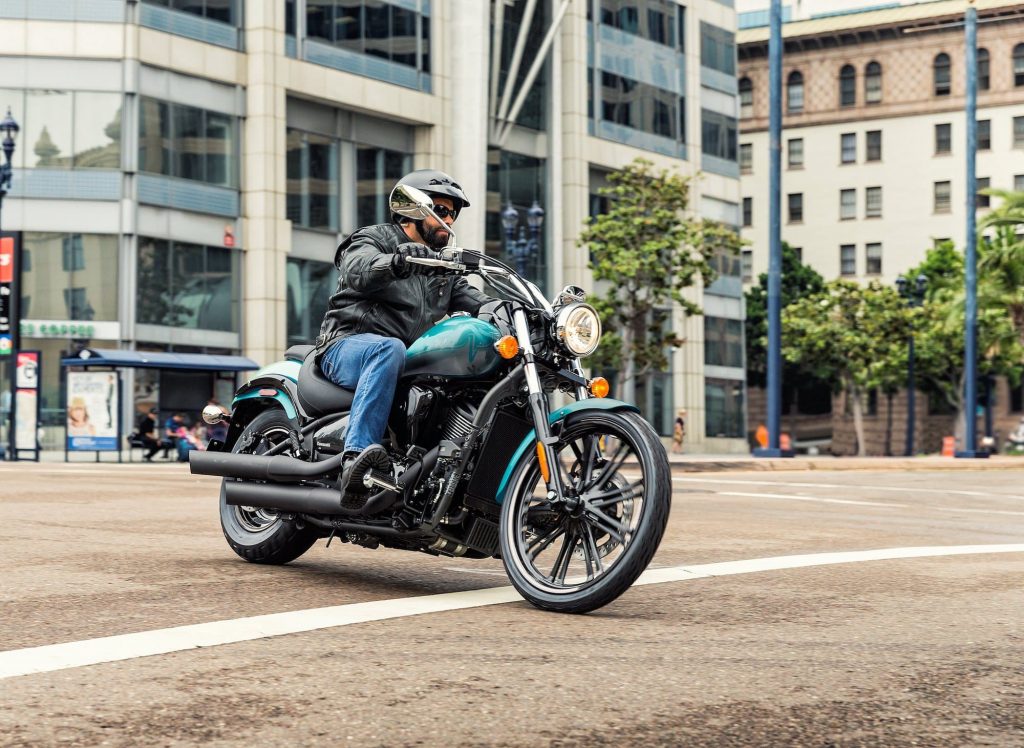
The Kawasaki Vulcan 900 is a middleweight, middle-sized cruiser with stylish looks and a punchy engine that’s quite beginner friendly.
It’s an interesting alternative to the Kawasaki Vulcan S EN650, another very popular middleweight cruiser. Both are liquid-cooled, though the Vulcan S’ smaller engine is a bit revvier and sportier. Pick your poison! (The Vulcan 900 isn’t available in every market, after all.)
The Vulcan 900 has a 903cc V-Twin SOHC liquid-cooled Engine tuned to deliver lots of torque from low rpm. It makes a peak of 37 kW (50 hp) at 5700 rpm, which would actually be within learner-legal limits in parts of the world where displacement isn’t a factor. Peak torque is 58 ft-lb (78 Nm) which gives it decent pull — and torque peaks at a low 3700 rpm.
Mind you, the Vulcan 900 doesn’t have a tachometer — so you won’t know when you’re hitting peak torque other than by the seat of your pants.
The Kawasaki Vulcan 900 comes in a few configurations. there’s the Classic, which is the bare cruiser, the LT, which has backrest, saddlebags, and touring screen, and the Custom, which is a more bare-bones cruiser. But they all share the same foundation.
The Vulcan 900 has a number of features that make it more modern than rattly cruisers of the past. These include
- Rubber engine mounts to reduces excess engine vibration
- Positive neutral finder to help find neutral at a stop (though only a five-speed transmission)
- Fuel injection with dual throttle bodies. The sub throttles, located behind the main throttle valve, are controlled by the ECU so that the fuel injection system retains a more precise throttle response, similar to a constant velocity carburetor.
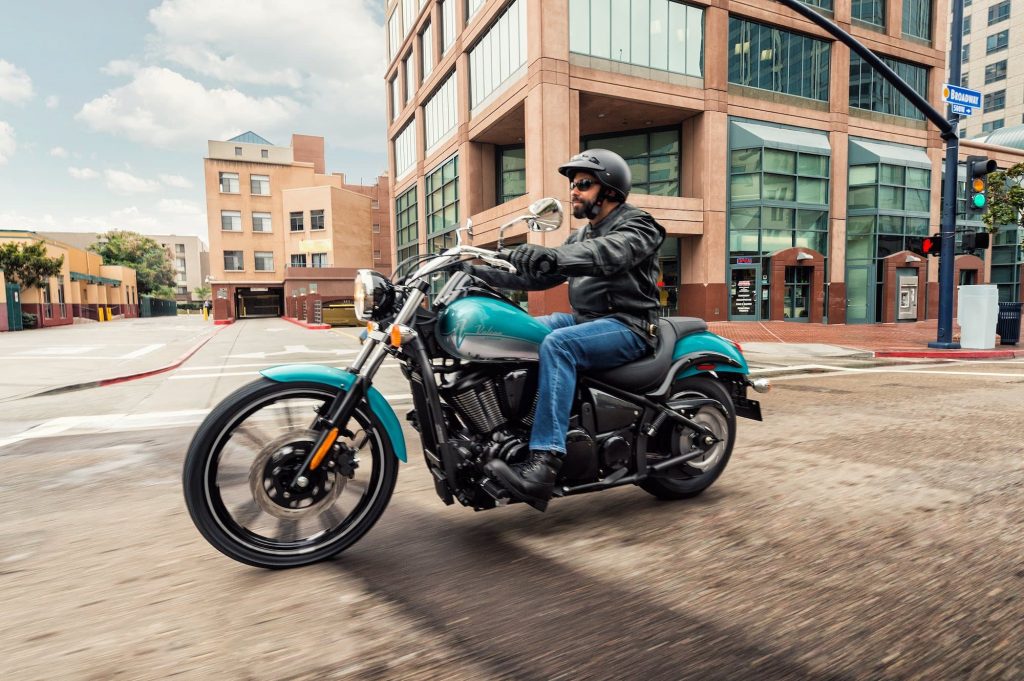
The Vulcan 900 has a very low 26.5-inch seat height that lets even shorter riders easily plant both feet on the ground at stops.
Over the years, the Vulcan 900 has kept being produced with nary a change other than paint jobs — which look really good!
While the Vulcan 900 is affordable, remember that it doesn’t come with much. There’s no ABS, no power modes, no adjustable suspension, and definitely no LED lights. The Vulcan is a basic bike. Remaining unchanged is probably why it has slipped past tightening regulations that require ABS on new models.
Braking is via a single front disc brake with a 300mm rotor, and a dual-piston caliper. It’s adequate, but obviously this isn’t a sportbike.
Similarly low-spec is the suspension. At the front there are 41mm forks with 150 mm of travel, and a single Unitrack shock at the back with preload adjustability.
But both those components are totally fine for the Vulcan 900.
While 50 hp and a curb weight of 611 lbs (37 kW / 277 kg) sounds like a really slow bike, the Vulcan 900 performs better than it sounds. True, it doesn’t leap away from the lights like a sport bike, but it does keep accelerating well past speeds where you’d want to be riding without a fairing.
Manual for the Kawasaki Vulcan 900
The above maintenance schedule comes directly from the users manual for the 2020 Kawasaki Vulcan 900, which is available here.
It’s the same as in other years, with just formatting of the users manual having changed over time.
